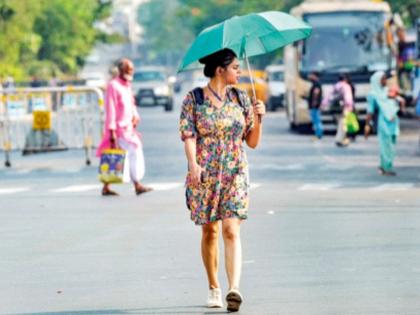Heatwave: IMD Issues Red Alert for Parts of Rajasthan, Punjab, and Delhi Over Next Five Days
By Lokmat English Desk | Updated: May 22, 2024 07:39 IST2024-05-22T07:39:39+5:302024-05-22T07:39:58+5:30
The scorching summer continues to plague vast regions of northern India, with little relief in sight for its residents. ...

Heatwave: IMD Issues Red Alert for Parts of Rajasthan, Punjab, and Delhi Over Next Five Days
The scorching summer continues to plague vast regions of northern India, with little relief in sight for its residents. The India Meteorological Department (IMD) has issued a 'red alert' for parts of Rajasthan, Punjab, Haryana-Chandigarh-Delhi, and West Uttar Pradesh, predicting severe heatwave conditions to persist over the next five days.
According to the Meteorological Department, daytime temperatures in numerous districts of these states are expected to exceed the 47°C mark. Speaking to ANI, senior IMD scientist Naresh Kumar said, "Temperatures are currently above normal across North West India and we had issued a red alert for the region over the past 2-3 days.
In terms of state-wise forecasts, a red alert has been issued for Rajasthan for the upcoming five days. The maximum temperature is anticipated to rise further from 45°C to reach 47°C.
"In Punjab and Haryana, maximum temperatures have registered a marginal drop due to a prevailing western disturbance but they will increase gradually hereafter by 2 to 3 degrees. we have already issued a 'red alert' for these two states. In neighbouring Uttar Pradesh, we have issued a red alert for the next five days and an orange alert for northern parts of Madhya Pradesh," Kumar told ANI.
While the northern regions endure the relentless heat of summer, there's a potential reprieve in the South. A senior IMD scientist mentioned the likelihood of heavy to very heavy rains, up to 12 cm, in Tamil Nadu and Kerala over the next 2-3 days.
As the IMD issues a 'red alert' for the national capital and other northern areas, health experts caution against outdoor activities, particularly between 11 am and 4 pm, to prevent adverse health effects.
Open in app